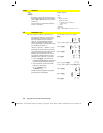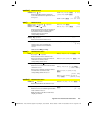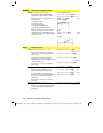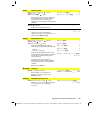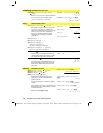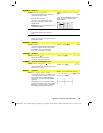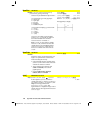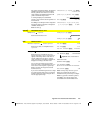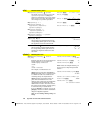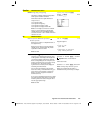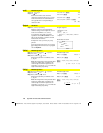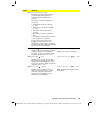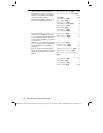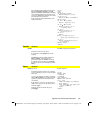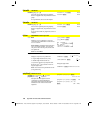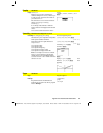
474 Appendix A: Functions and Instructions
8992APPA.DOC TI-89 / TI-92 Plus: Appendix A (US English) Susan Gullord Revised: 02/23/01 1:48 PM Printed: 02/23/01 2:21 PM Page 474 of 132
nPr()
MATH/Probability menu
nPr(
expression1
,
expression2
)
⇒
expression
For integer
expression1
and
expression2
with
expression1
‚
expression2
‚
0,
nPr()
is the
number of permutations of
expression1
things
taken
expression2
at a time. Both arguments
can be integers or symbolic expressions.
nPr(
expression,
0
)
⇒
1
nPr(
expression, negInteger
)
⇒
1/((
expression
+1)
ø
(expression
+2)
...
(
expression
ì
negInteger
))
nPr(
expression, posInteger
)
⇒
expression
ø
(
expression
ì
1)
...
(
expression
ì
posInteger
+1)
nPr(
expression, nonInteger
)
⇒
expression
!/
(
expression
ì
nonInteger
)!
nPr(z,3)
¸
z
ø
(z
ì
2)
ø
(z
ì
1)
ans(1)|z=5
¸
60
nPr(z,
ë
3)
¸
1
(z+1)
ø
(z+2)
ø
(z+3)
nPr(z,c)
¸
z!
(z
ì
c)!
ans(1)
ù
nPr(z
ì
c,
ë
c)
¸
1
nPr(
list1
,
list2
)
⇒
list
Returns a list of permutations based on the
corresponding element pairs in the two lists.
The arguments must be the same size list.
nPr({5,4,3},{2,4,2})
¸
{20 24 6}
nPr(
matrix1
,
matrix2
)
⇒
matrix
Returns a matrix of permutations based on
the corresponding element pairs in the two
matrices. The arguments must be the same
size matrix.
nPr([6,5;4,3],[2,2;2,2])
¸
[
30 20
12 6
]
nSolve()
MATH/Algebra menu
nSolve(
equation
,
varOrGuess
)
⇒
number or
error_string
Iteratively searches for one approximate real
numeric solution to
equation
for its one
variable. Specify
varOrGuess
as:
variable
– or –
variable
=
real number
For example,
x
is valid and so is
x=3
.
nSolve(x^2+5x
ì
25=9,x)
¸
3.844
...
nSolve(x^2=4,x=
ë
1)
¸
ë
2.
nSolve(x^2=4,x=1)
¸
2.
Note: If there are multiple solutions, you
can use a guess to help find a particular
solution.
nSolve()
is often much faster than
solve()
or
zeros()
, particularly if the “|” operator is used
to constrain the search to a small interval
containing exactly one simple solution.
nSolve()
attempts to determine either one
point where the residual is zero or two
relatively close points where the residual has
opposite signs and the magnitude of the
residual is not excessive. If it cannot achieve
this using a modest number of sample points,
it returns the string “
no solution found
.”
If you use
nSolve()
in a program, you can use
getType()
to check for a numeric result before
using it in an algebraic expression.
Note: See also
cSolve()
,
cZeros()
,
solve()
, and
zeros()
.
nSolve(x^2+5x
ì
25=9,x)|x<0
¸
ë
8.844
...
nSolve(((1+r)^24
ì
1)/r=26,r)|r>
0 and r<.25
¸
.0068
...
nSolve(x^2=
ë
1,x)
¸
"no so
l
ution foun
d
"



